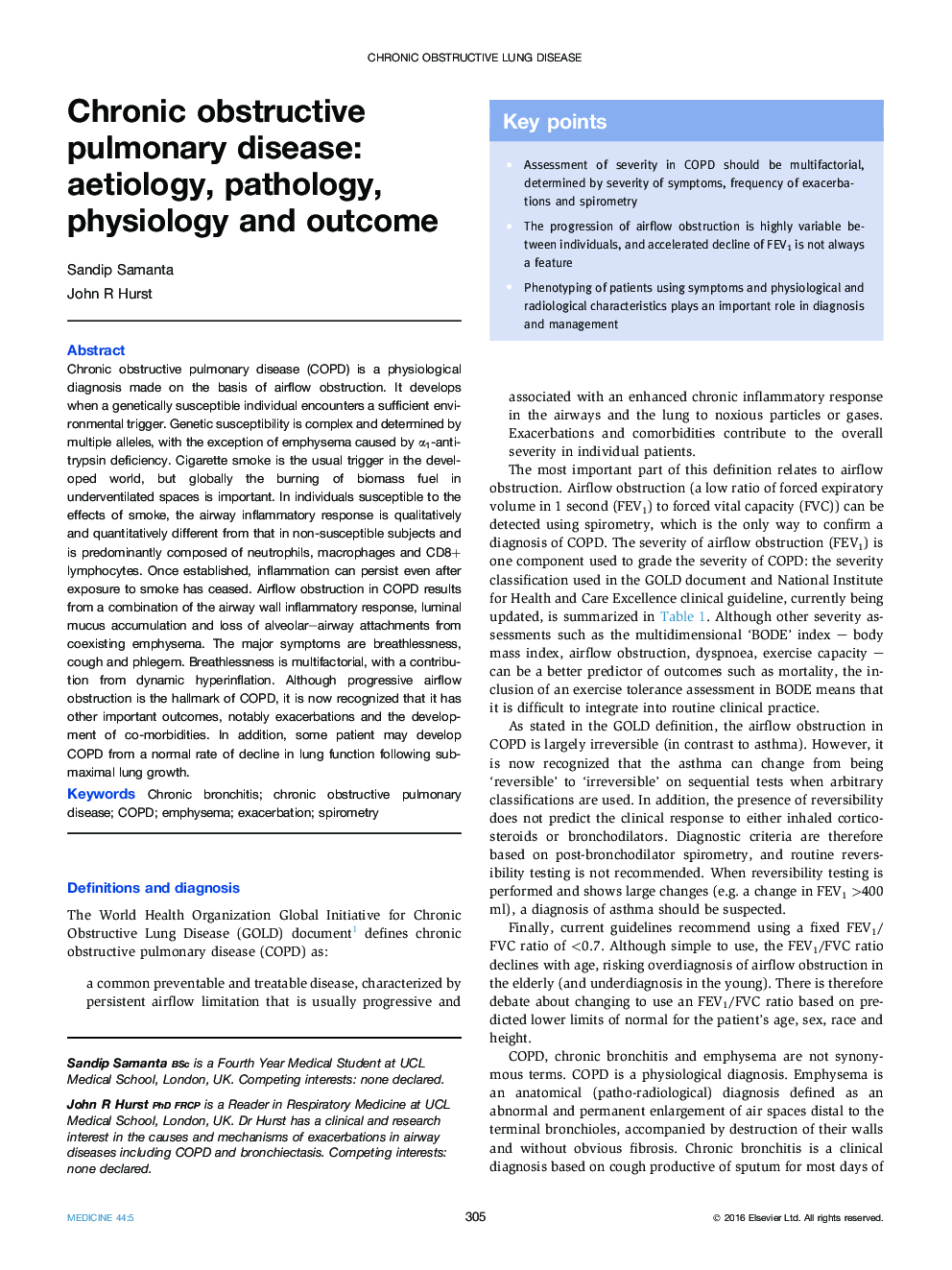| کد مقاله | کد نشریه | سال انتشار | مقاله انگلیسی | نسخه تمام متن |
|---|---|---|---|---|
| 3803616 | 1244933 | 2016 | 5 صفحه PDF | دانلود رایگان |
Chronic obstructive pulmonary disease (COPD) is a physiological diagnosis made on the basis of airflow obstruction. It develops when a genetically susceptible individual encounters a sufficient environmental trigger. Genetic susceptibility is complex and determined by multiple alleles, with the exception of emphysema caused by α1-antitrypsin deficiency. Cigarette smoke is the usual trigger in the developed world, but globally the burning of biomass fuel in underventilated spaces is important. In individuals susceptible to the effects of smoke, the airway inflammatory response is qualitatively and quantitatively different from that in non-susceptible subjects and is predominantly composed of neutrophils, macrophages and CD8+ lymphocytes. Once established, inflammation can persist even after exposure to smoke has ceased. Airflow obstruction in COPD results from a combination of the airway wall inflammatory response, luminal mucus accumulation and loss of alveolar–airway attachments from coexisting emphysema. The major symptoms are breathlessness, cough and phlegem. Breathlessness is multifactorial, with a contribution from dynamic hyperinflation. Although progressive airflow obstruction is the hallmark of COPD, it is now recognized that it has other important outcomes, notably exacerbations and the development of co-morbidities. In addition, some patient may develop COPD from a normal rate of decline in lung function following sub-maximal lung growth.
Journal: Medicine - Volume 44, Issue 5, May 2016, Pages 305–309
